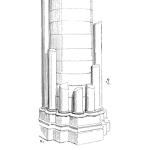
Guest Post by Daniel Burrus (first posted on CERM ® RISK INSIGHTS – reposted here with permission)
Question for all who read this: to succeed at any business venture, you merely need to have huge resources, dedicated personnel, and a quality product or service, right? From there, it’s just collecting money and living a good life.
This presumption is more common than you realize, and could not be more wrong and misguided. In a world where exponential change and digital disruptions abound, you simply cannot rest on your laurels and merely rely on what you’ve already built. Because of the rapidly accelerating rate of change, your business is only ever as strong as its next innovation.
[Read more…]












 Ask a question or send along a comment.
Please login to view and use the contact form.
Ask a question or send along a comment.
Please login to view and use the contact form.